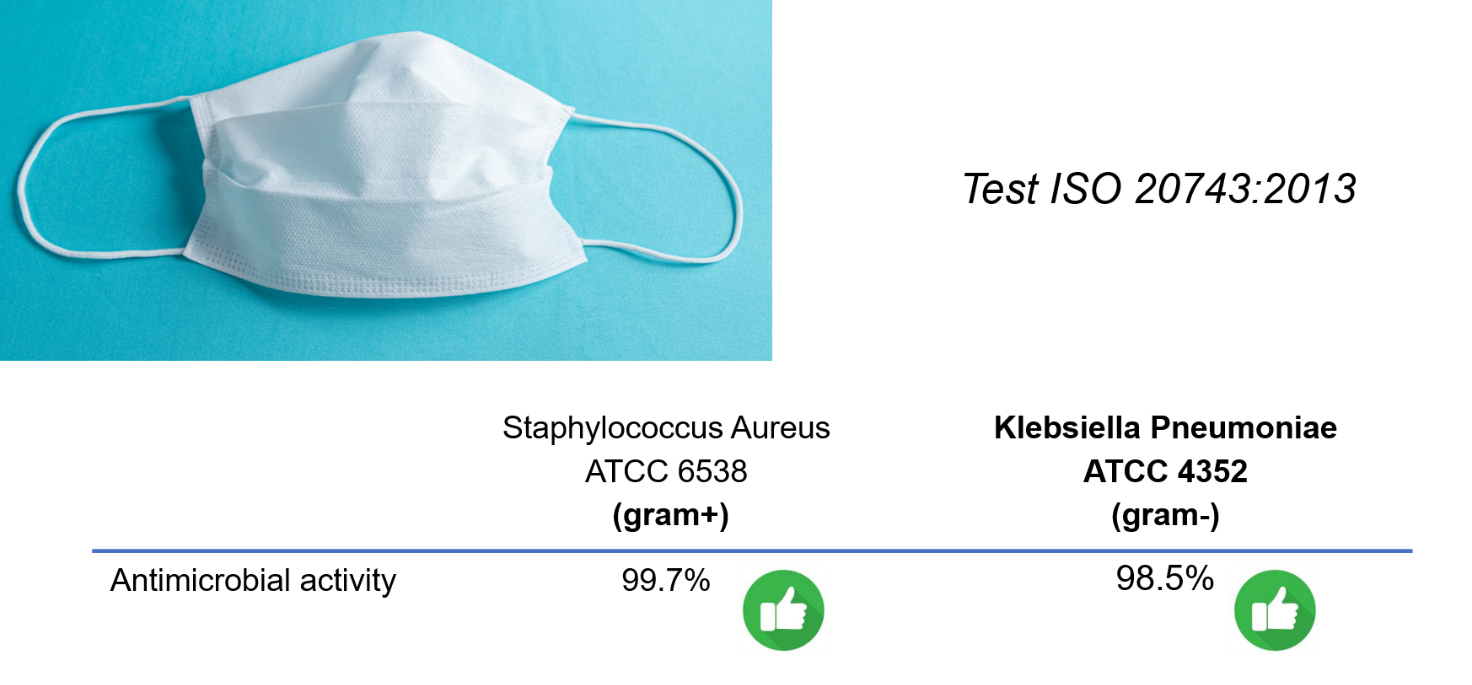Antimicrobial Fabrics
Clothing and fabrics with antibacterial property
Problem: During use, clothes can be contaminated with micro-organisms that proliferate in the fabric. Antibacterial substances are used to limit or cancel the presence of microorganisms.
Data from the European Economic Community report that in hospitals one in ten patients is afflicted with “nosocomial” infections.
The result is a prolonged hospital stay of about 10 million days a year in Europe alone. The use of antimicrobial hospital-use tissues, such as linens and antibacterial bandages, have proven effective reduction of nosocomial infections, improving patient health and saving millions of Euros.
Similar problems also occur in domestic environments, offices, public places.
State of the Art: Currently, most of the antibacterial fabrics available on the market contain silver ions and / or “triclosan” (an aromatic chlorinated compound similar to DDT, see Figure) which are gradually released from the tissues and are dispersed in the environment and on the skin, decreasing in effectiveness and leading to environmental pollution.
Triclosan, similarly to other chlorinated phenols, can be accumulated in the tissues of living organisms and breast milk (and then be ingested by infants); its accumulation can cause liver and lung dysfunctionality, induce sterility, etc.

Solution: Crossing developed two technologies for the antimicrobial treatment of fabrics: Grafting of antimicrobial agents with ACL and an antoimicrobial coating.
First technology can graft irreversibly antimicrobial agents to the fabric while maintaining their functionality unchanged. Tests are under way in the presence of chitosan.
The antimicrobial coating allows to deposit on the surface of the tissues a formulation with the antimicrobial agent inside. With this technique, also surgical masks have been treated for antimicrobial properties.
Both technologies differ from the treatments currently on the market. In fact, the antimicrobial agent is permanently attached to the tissue and the effectiveness of the treatment is maintained over time. These protocols can be used for garments but also for carpets, sport ware, in natural or synthetic fibres, fabrics, etc.


